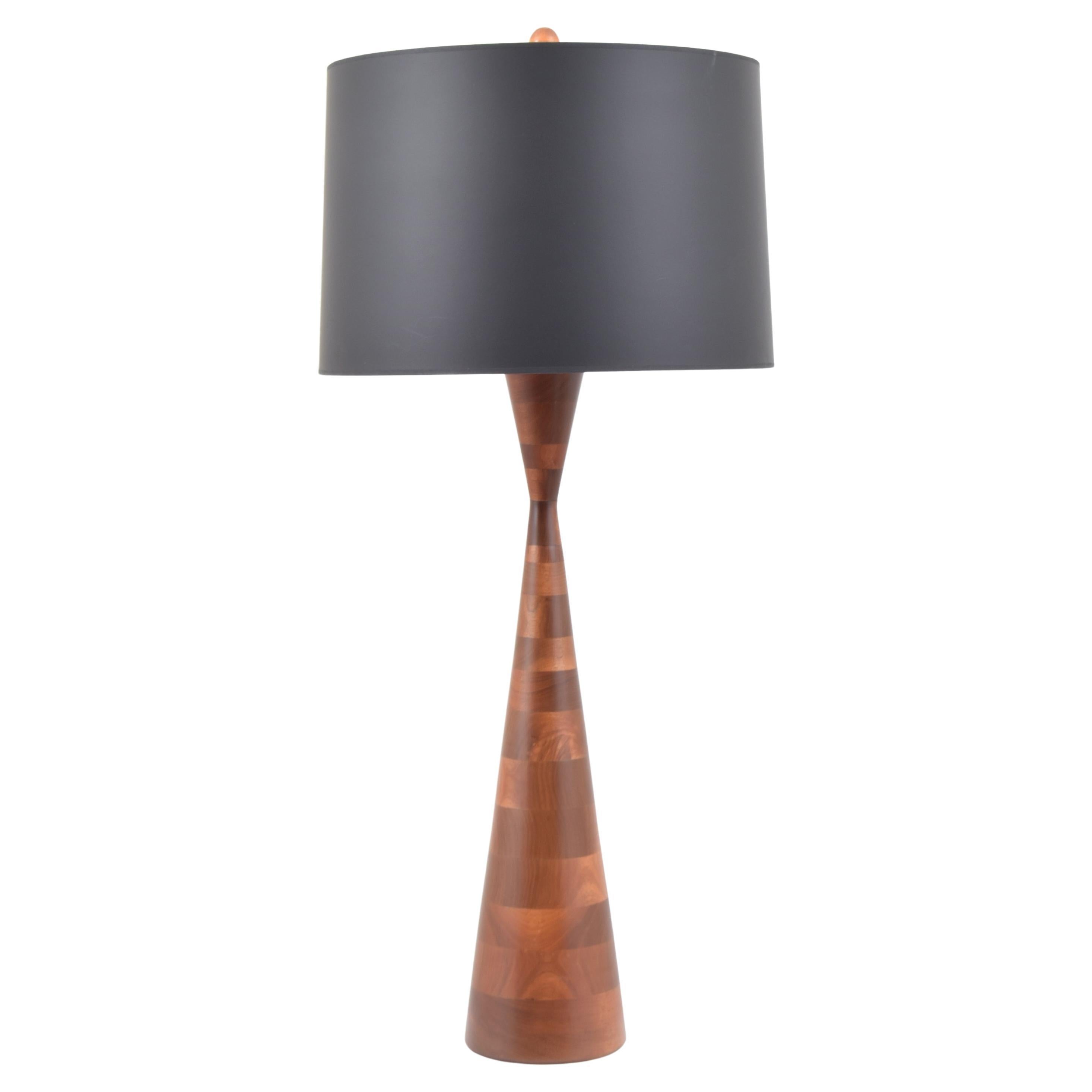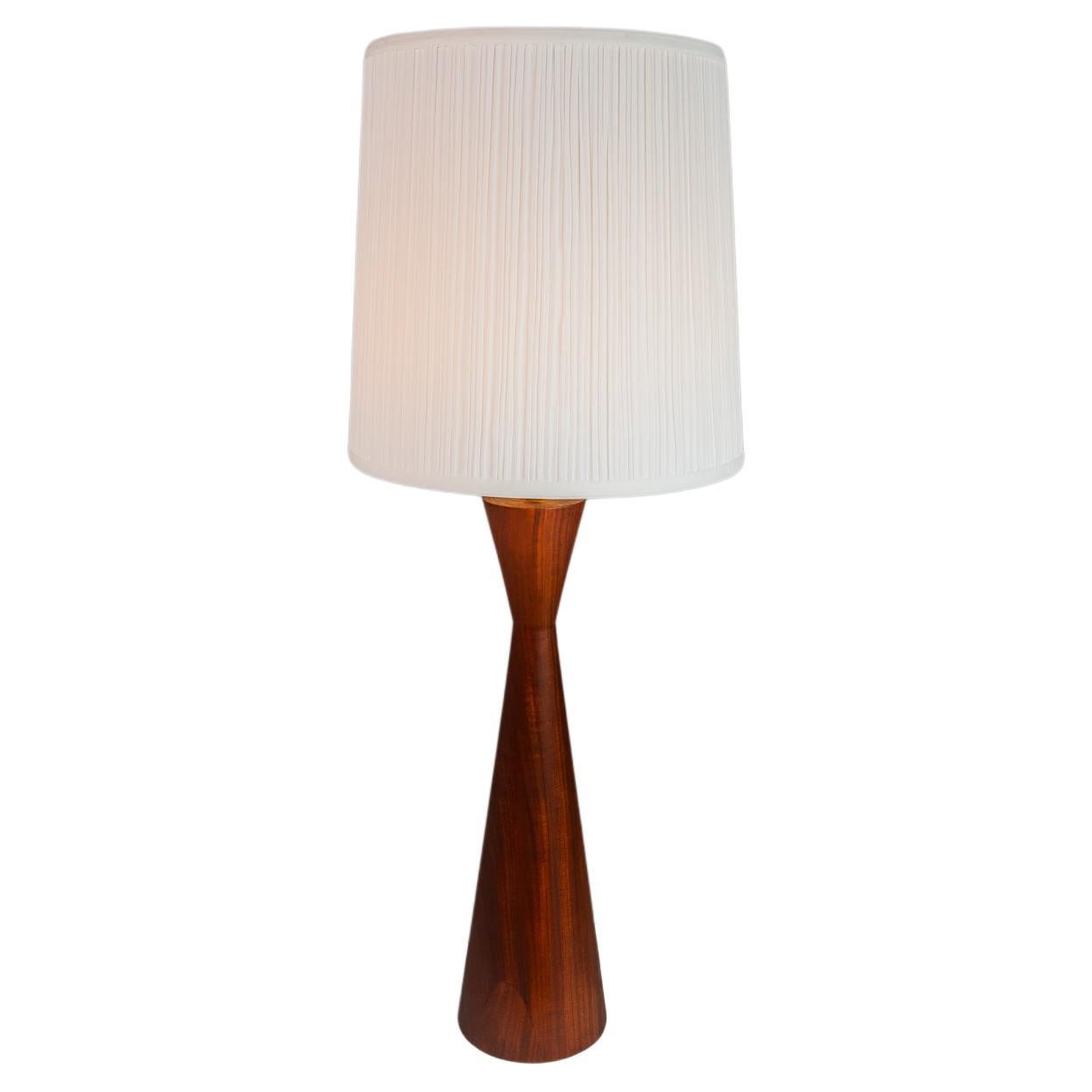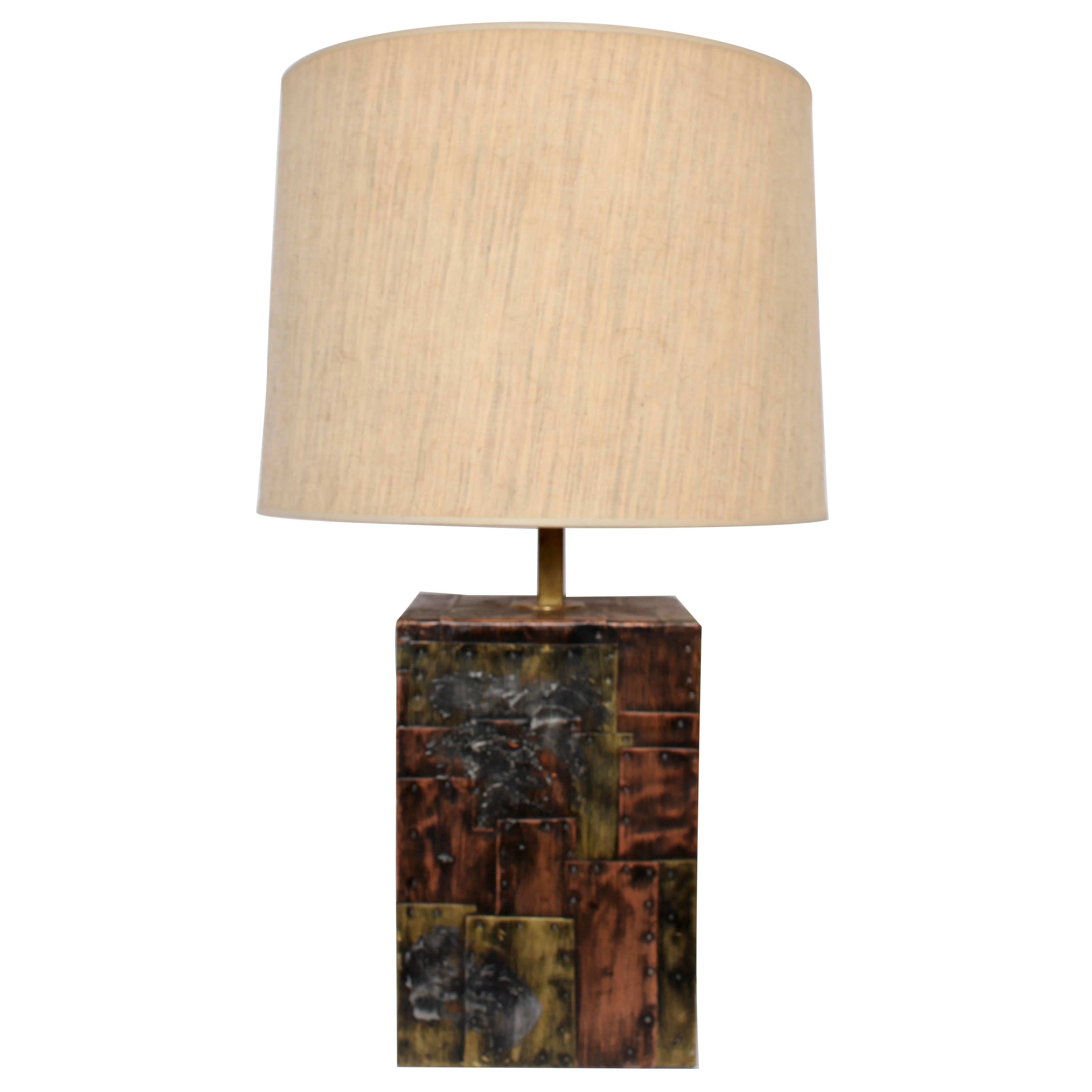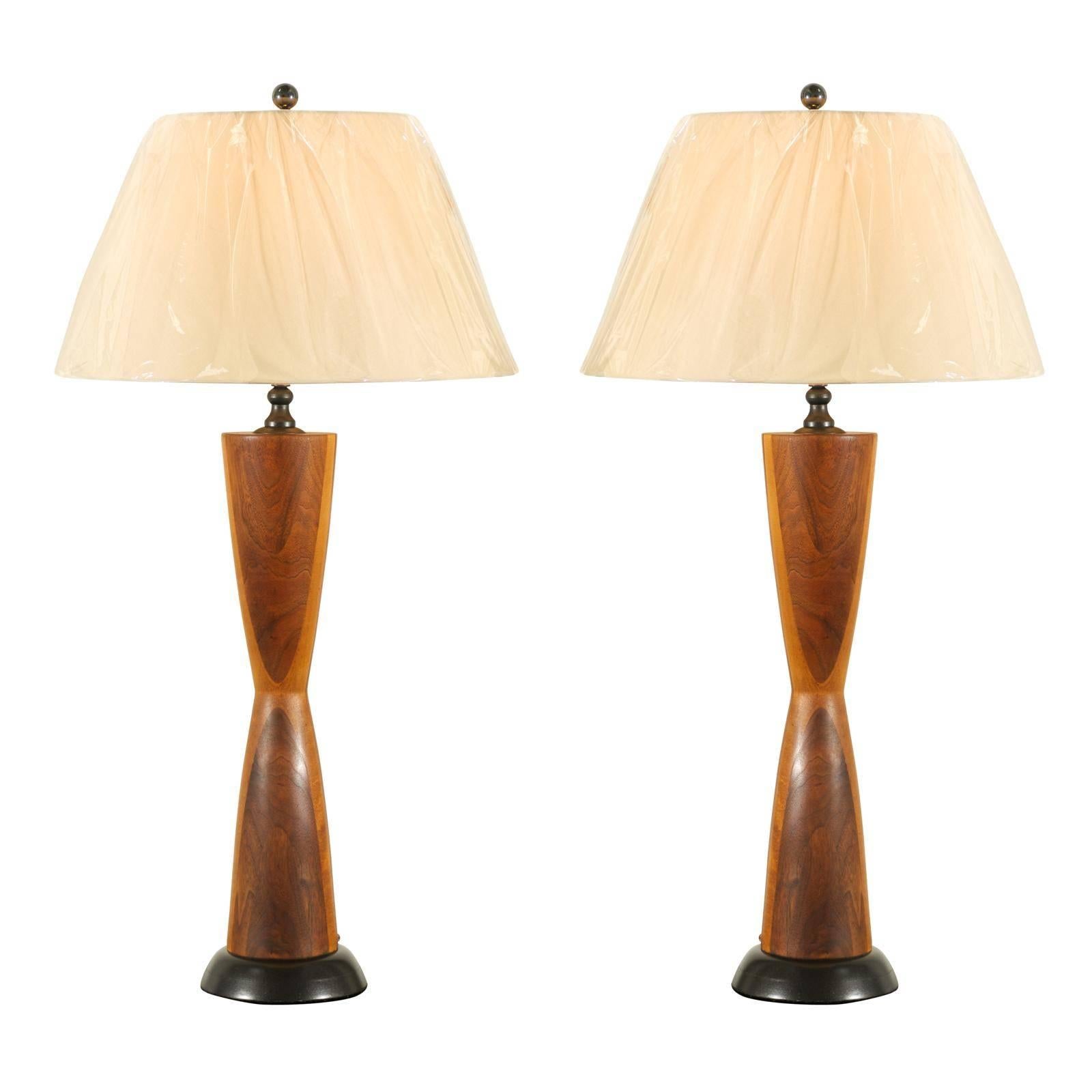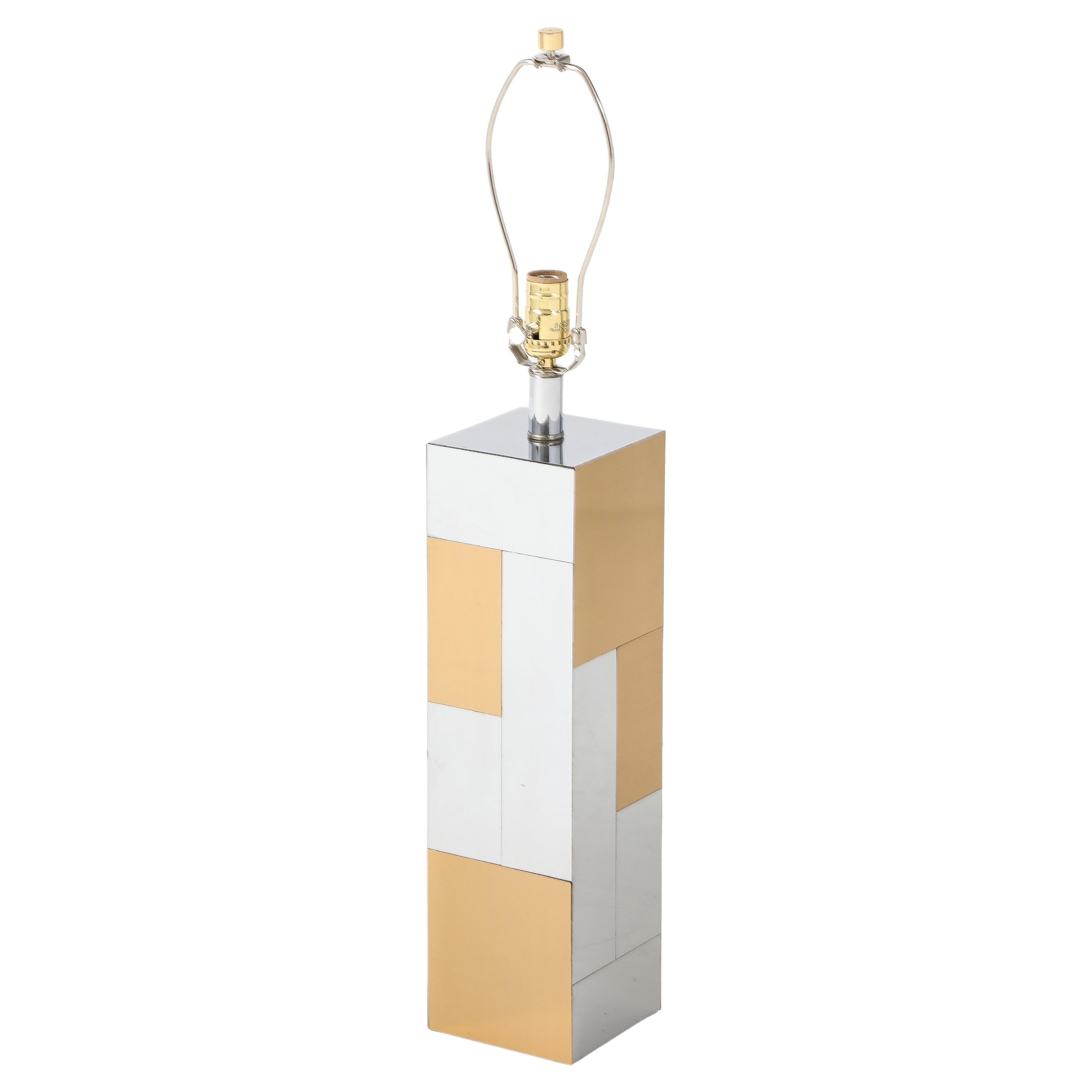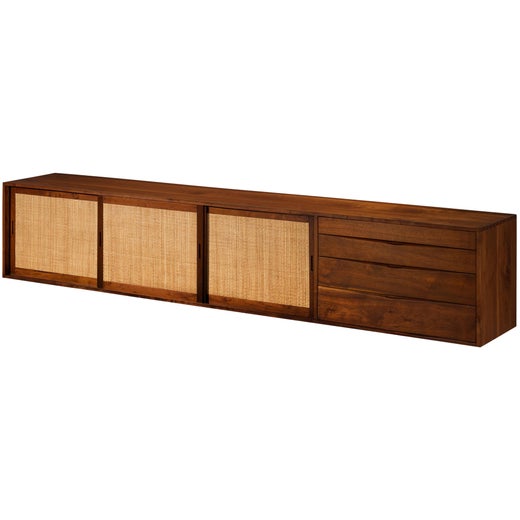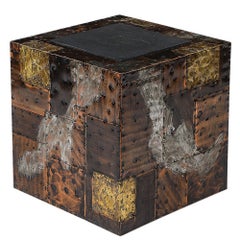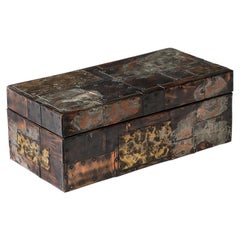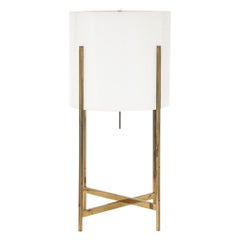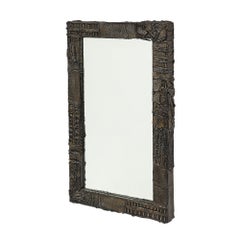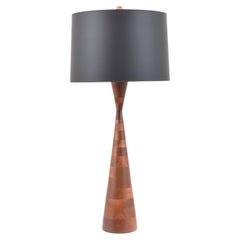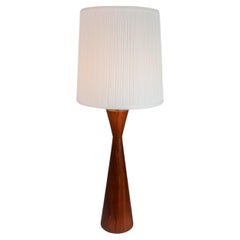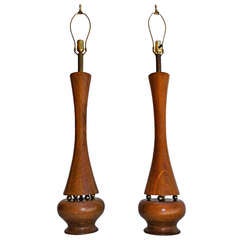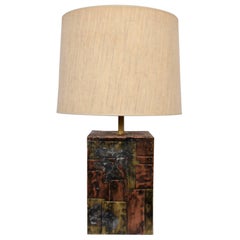Paul Evans and Phillip Lloyd Powell Table Lamp, Walnut, Pewter
About the Item
- Creator:Paul Evans (Designer),Phillip Lloyd Powell (Designer)
- Dimensions:Height: 31 in (78.74 cm)Diameter: 5 in (12.7 cm)
- Power Source:Plug-in
- Voltage:110-150v
- Lampshade:Not Included
- Style:Mid-Century Modern (Of the Period)
- Materials and Techniques:
- Place of Origin:
- Period:
- Date of Manufacture:1956
- Condition:Rewired: The walnut lamp body was professionally refinished. We updated the electrical with a two light cluster in satin nickel and new French twist cord. Refinished. Wear consistent with age and use. Minor scratching to the pewter inlay (photo 9).
- Seller Location:New York, NY
- Reference Number:1stDibs: LU95691878032
Paul Evans
A designer and sculptor, Paul Evans was a wild card of late 20th century modernism. A leading light of the American Studio Furniture movement, Evans’s sideboards, credenzas, coffee tables and other work manifests a singular aesthetic sense, as well as a seemingly contradictory appreciation for both folk art forms and for new materials and technologies.
Evans’s primary material was metal, not wood, which was favored by his fellow studio designers, and Bucks County, Pennsylvania, neighbors George Nakashima and Phillip Lloyd Powell. He trained in metallurgy and studied at the Cranbrook Academy of Art, the famed crucible of modern design and art in suburban Detroit. For a time early in his career, Evans also worked at Sturbridge Village, a historical “living museum” in Massachusetts, where he gave demonstrations as a costumed silversmith.
Evans’s earliest work unites these influences. The pieces that made his reputation are known as “sculpted-front” cabinets: wood cases faced with box-like high-relief patinated steel mounts laid out in a grid pattern. Each mount contains a metal emblem, or glyph, and the effect is that of a brawny quilt.
Evans’s later work falls into three distinct style groups. His sculpted-bronze pieces, begun in the mid-1960s, show Evans at his most expressive. He employed a technique in which resin is hand-shaped, and later sprayed with a metal coating, allowing for artistic nuance in the making of chairs, tables and case pieces. Later in the decade and into the 1970s, Evans produced his Argente series for celebrated manufacturer Directional (a brand known to vintage mid-century modern furniture collectors everywhere): consoles and other furniture forms that feature aluminum and pigment-infused metal surfaces welded into abstract organic forms and patterns.
Last, Evans's Cityscape design series — a milestone in the history of brutalist design — meshed perfectly with the sleek, “high tech” sensibility of the later ’70s. Evans constructed boxy forms and faced them with irregular mosaic patterns that mixed rectangular plaques of chromed steel, bronze or burlwood veneer. These, like all of Paul Evans’s designs, are both useful and eye-catching. But their appeal has another, more visceral quality: these pieces have clearly been touched by an artist’s hand.
Find a collection of authentic Paul Evans furniture today on 1stDibs.
Phillip Lloyd Powell
An American woodworker known for a wide range of furniture that is sensuous, sculptural and imbued with character, Phillip Lloyd Powell is an iconic figure in design. His organic style transcended the conventions of popular mid-century modern furniture and is best reflected in the vintage cabinets and tables for which he is renowned.
“I am an artist working with furniture,” Powell once said. But the self-taught furniture maker wore a number of different hats throughout his lifetime. He crafted handmade furniture as a teenager at his boyhood home and went on to study engineering at what is now Drexel University. Powell served in the Army Air Corps during World War II, and, on his return, he established his first showroom in New Hope, in his home state of Pennsylvania, stocking furniture from Knoll, Herman Miller and Isamu Noguchi.
In New Hope, Powell encountered fellow furniture designers Paul Evans and George Nakashima. The latter, a master woodworker who preferred a personal approach to design over industrial methods and materials, encouraged Powell to concentrate on making his own furniture. When Powell did so, he’d experiment with Nakashima’s unused stock of wood, drawing on natural world forms for seating and shapely coffee tables.
Evans, who moved to New Hope in 1955, was invited to share Powell’s studio space. Powell’s furniture design practice really took off and a collaboration with Evans put into motion the 1960s American Studio Craft Movement, which came to include furniture designers Wharton Esherick and Sam Maloof. The decade-long partnership between Evans and Powell yielded stone-topped tables, walnut chests with sculptured metal exteriors and more.
Powell was inspired by Evans’s artistry as a jewelry designer — he was a skilled welder whose Cityscape pieces are milestones of brutalism. Powell, in turn, encouraged him to turn his sculptures into furniture. Like Evans, Powell incorporated a range of materials into his work, rendering the interiors of his hand-carved cabinets alluring and distinctive with applications of silver leaf and fabrics.
The sinewy arms of Powell’s famous New Hope lounge chair are representative of his broad expertise with wood and his ability to make graceful yet functional furniture. He worked slowly, and the influence of the natural world remained a driving force in his designs. Powell produced approximately 1,000 pieces while he lived and worked in New Hope until his death in 2008.
Find vintage Phillip Lloyd Powell furniture on 1stDibs.
- ShippingRetrieving quote...Shipping from: New York, NY
- Return Policy
More From This Seller
View AllVintage 1960s American Mid-Century Modern Side Tables
Slate, Bronze, Copper, Steel, Pewter
Vintage 1960s American Mid-Century Modern Decorative Boxes
Bronze, Copper, Pewter
Vintage 1960s American Mid-Century Modern Table Lamps
Brass
Vintage 1970s American Mid-Century Modern Wall Mirrors
Bronze
Vintage 1960s Italian Mid-Century Modern Table Lamps
Ceramic
Vintage 1970s American Mid-Century Modern Barware
Brass, Chrome
You May Also Like
Vintage 1960s American Mid-Century Modern Table Lamps
Brass
Vintage 1960s American Mid-Century Modern Table Lamps
Walnut
Vintage 1950s American Mid-Century Modern Table Lamps
Vintage 1960s American Modern Table Lamps
Brass, Copper, Pewter
Vintage 1950s American Mid-Century Modern Table Lamps
Walnut
Vintage 1970s American Mid-Century Modern Table Lamps
Brass, Chrome
